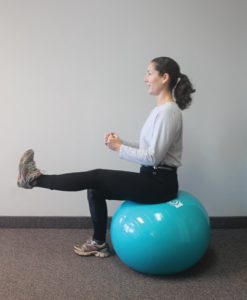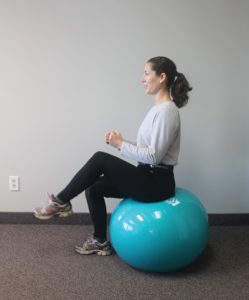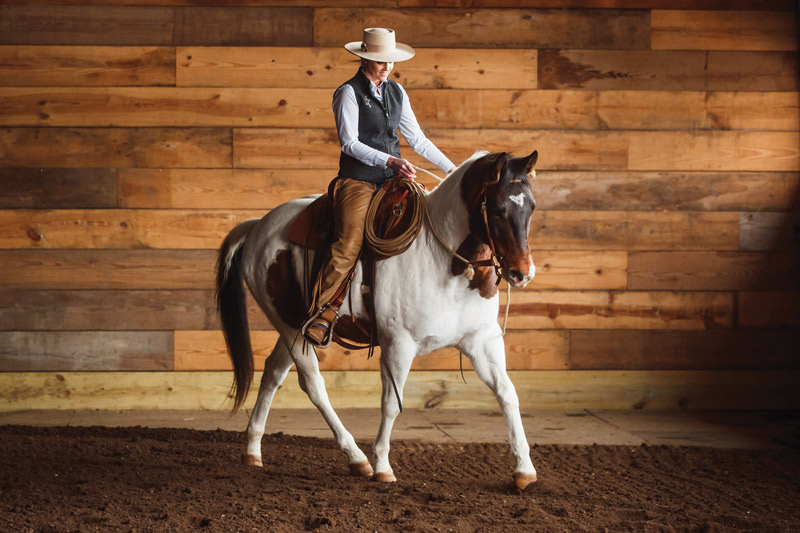
Horses are so sensitive they can feel a fly landing anywhere on their body and twitch the skin underneath. Knowing this, it’s no surprise that any imbalances, tightness or injury in the rider will be felt by the horse, impacting communication and balance. Coming from an equestrian family and working with trainers and riders, Scott Henderson, DPT, a physical therapist of 35 years, developed sports-specific exercises to help riders overcome the pain and tension that often accompany this high-impact pursuit. His Equifitness program is focused on what he calls “the three R’s”—releasing, re-educating and rebuilding. We’ll run through a few warm-up exercises for riding.
Here, he shares some of his pelvic mobility exercises that you can use to warm up before riding. These exercises are followed by his seated kicking and marching exercises, which emphasize core stability, endurance and strengthening, all while maintaining proper position.
The only equipment you need is an inexpensive exercise ball. The correct ball size depends on your height: 4’11” to 5’4″ height should use a 55 cm ball; 5’4″ to 5’11” height a 65 cm ball; 5’11” to 6’7″ height, a 75 cm ball. You should be able to sit with your knees at a right angle and your thighs parallel to the ground.
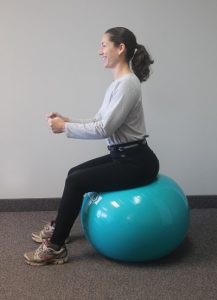
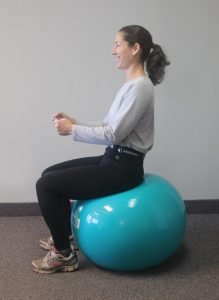
Pelvic Mobility
These warm-up exercises are designed to increase mobility in your hips and increase your balance, core stability, and core and hip strength, all which are important for riding.
Start seated on the ball with your feet on the floor, toes pointed straight ahead, and arms in riding position. Watch that you maintain good riding position with your head up and core engaged, and your shoulders back and level.
Movement is created through your hips and your core. The key is to keep your head, shoulders and upper body still while hinging at your waist and moving your hips.
You may need to complete these movements while sitting in front of a full-length mirror to ensure that you’re not moving above your waist.
Only move as far as you are able without moving your upper body. Your movement will increase as you progress with your program and your freedom of movement increases.
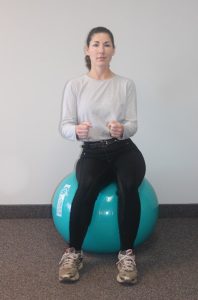
Complete 10-20 repetitions of each movement. There are three basic movements:
1. Side to side: Alternately hinge your hips out to either side.
2. Front to back: Tuck your pelvis underneath you both forward and backward.
3. Rotation: Do hula-hoop type hip circles in both directions.
Seated Kicking and Marching
Start seated on the ball with your feet on the floor and your toes pointing straight ahead. Arms are ideally held in riding position; however, you may have to place your hands on the ball to help stabilize yourself at first. This will get easier as your core and hip strength increase. Watch that you maintain good riding posture with head up, core engaged, and shoulders back and level. There are two movements:
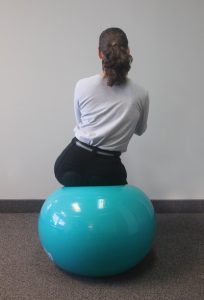
1. Seated kicking: Slowly straighten each knee until the knee locks. Alternate each leg. Initially hold for a count and then return your foot to the floor. As your strength and stability improve, you will be able to hold each leg out in front of you for a 5-10 count. Repeat 10-20 repetitions of each leg.
2. Marching: Slowly pick each knee up off the floor as high as you can comfortably lift it while keeping your foot pointed straight ahead. Initially hold for a count and then return foot to the floor. As your strength and stability improve, you will be able to hold each leg up for a 5-10 count. Repeat 10-20 repetitions of each leg.
By improving your core strength and flexibility, you will start reaping the rewards in stronger communication with your horse.
This article about warm-up exercises for riding appeared in the January/February 2021 issue of Horse Illustrated magazine. Click here to subscribe!
